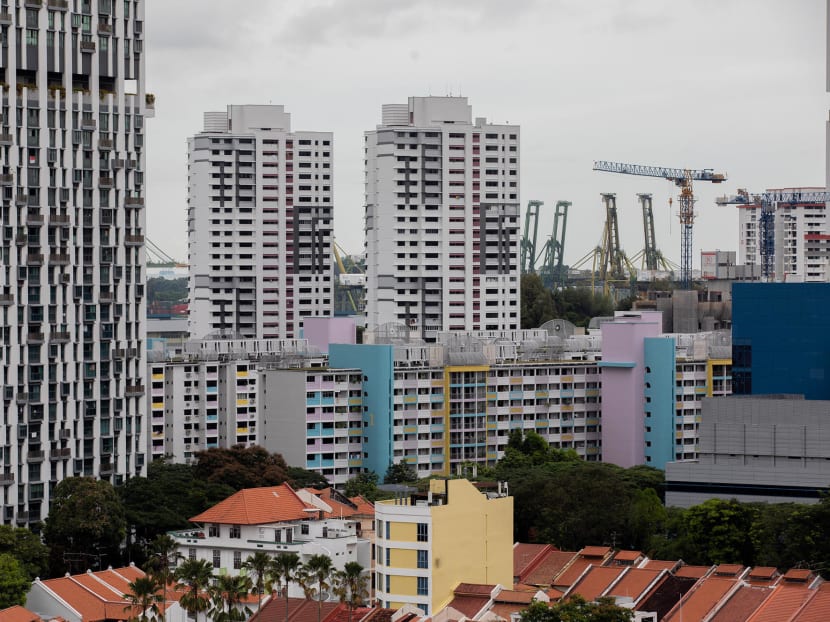MAS urges homebuyers to exercise prudence, as housing loans drive increase in household debt
SINGAPORE — Household debt in the city-state has grown — driven mainly by housing loans — over the past year and is higher than pre-Covid levels, said the Monetary Authority of Singapore (MAS) in its annual financial stability review.

Household debt made up 70 per cent of Singapore’s gross domestic product (GDP) in the third quarter of this year.
- Household debt in Singapore has grown over the past year, driven mainly by housing loans, said the Monetary Authority of Singapore (MAS)
- The residential property market has remained buoyant throughout the Covid-19 pandemic
- MAS cautioned Singaporeans to exercise prudence when taking on debt for property purchases
- However, MAS noted that the median household is still able to service its debt
SINGAPORE — Household debt in the city-state has grown — driven mainly by housing loans — over the past year and is higher than pre-Covid levels, said the Monetary Authority of Singapore (MAS) in its annual financial stability review.
The central bank cautioned Singaporeans to exercise prudence when taking on debt for property purchases.
“Households should exercise caution in taking on new commitments, especially with regard to their abilities to service their long-term mortgage obligations.
“Highly leveraged households should also plan to build up financial buffers where possible, to allow some cushion against stresses emanating from an unexpected deterioration in macroeconomic conditions,” said MAS in its report released on Monday (Dec 6).
Nevertheless, MAS said that the balance sheets for the household sector have been relatively resilient and that the median household would still be able to service its debt.
INCREASING HOUSEHOLD DEBT
The report showed that household debt made up 70 per cent of Singapore’s gross domestic product (GDP) in the third quarter of this year.
While this is a slight reduction from 72 per cent in the first quarter, it is still higher than pre-Covid levels, where household debt made up 67 per cent of total economic output in the fourth quarter of 2019.
Between the fourth quarter of 2019 and the third quarter of this year, household debt rose while nominal GDP fell — thereby increasing the household debt’s share of GDP.
The total value of household debt grew by 6.8 per cent over the past year.
“Accordingly, household leverage risk has effectively risen compared to pre-Covid levels,” said MAS.
Housing loans, which saw a 2.4 percentage point increase, was the single largest contributor to this 3.7 per cent growth.
This has been underpinned by a buoyant residential property market, which recorded higher transaction prices, despite the economic challenges brought on by the Covid-19 pandemic.
MAS noted that the credit quality of housing loans has improved over the past year and remains healthy.
“However, in the event of a shock to the property market, the correction in property prices could impact domestic demand, given that residential properties and loans account for the bulk of the household balance sheet, representing about 40 per cent of assets and 75 per cent of liabilities,” said MAS.
DECREASE IN CREDIT CARD DEBT
Short-term debt in households, owing largely to credit card payments, continued to decline throughout the Covid-19 pandemic.
Credit card balances account for 2.1 per cent of Singapore’s GDP in the third quarter of this year. The share was closer to 2.5 per cent at the start of the pandemic.
The fall could be due to consumers cutting back on spending as they continue to stay at home more due to safe distancing measures to manage the spread of the coronavirus, or out of caution as they are uncertain of the economic environment, said MAS.
HOUSEHOLD BALANCE SHEETS
Despite the economic impact wrought by Covid-19, MAS said households in Singapore continued to build up their net wealth.
Aggregate household net wealth rose to 4.6 times of GDP in the third quarter of this year, compared to 4.4 times of GDP in the same period a year ago.
This is because the higher value of financial and property assets more than offset the growth in liabilities, said MAS.
Liquid assets, such as cash and deposits, also continued to exceed total liabilities. This will help provide households with a significant financial buffer against income and interest rate shocks, said MAS.
In a hypothetical scenario where household income falls by 10 per cent and the interest rate increases by 2.5 per cent — a scenario that MAS uses as a stress test — the results show that the mortgage servicing ratio of median households remains well below the maximum threshold of 60 per cent.
Known as Total Debt Servicing Ratio, this requirement set by authorities stipulates that all debt obligations cannot exceed 60 per cent of a person’s income.
“As the bulk of the household liabilities are housing loans, the results suggest that the median household would still be able to service its debt,” said MAS.
MAS however again cautioned that while labour market conditions look set to improve in 2022, the financial positions of households could still come under pressure and affect how well they are able to service their debts if growth setbacks or policy missteps in the global economy occurs.








